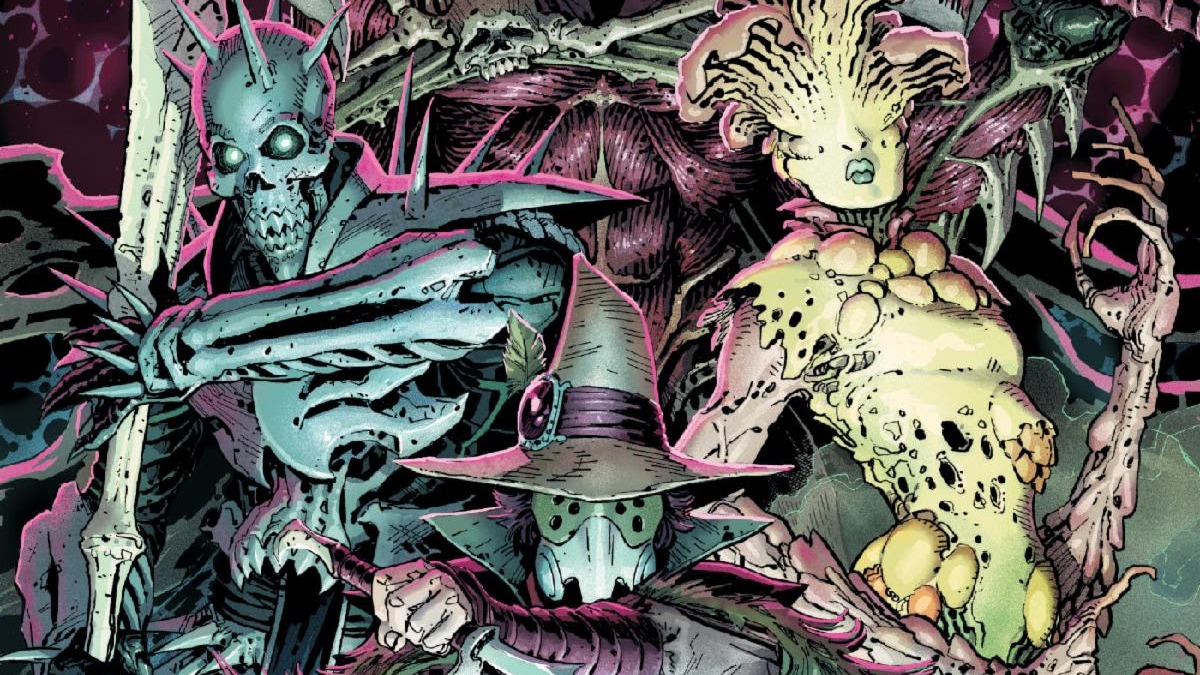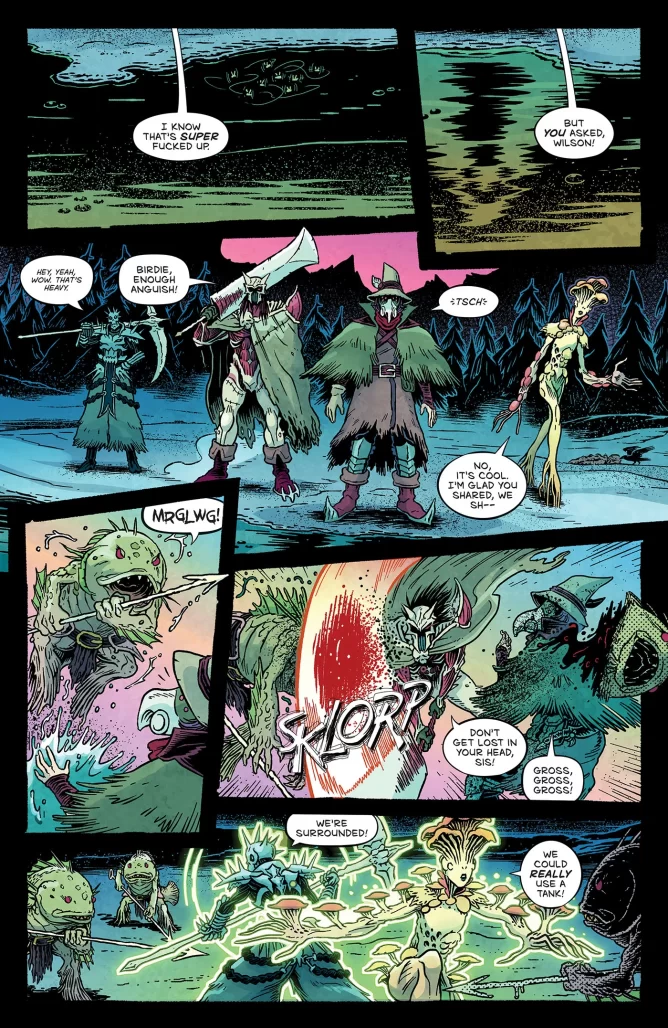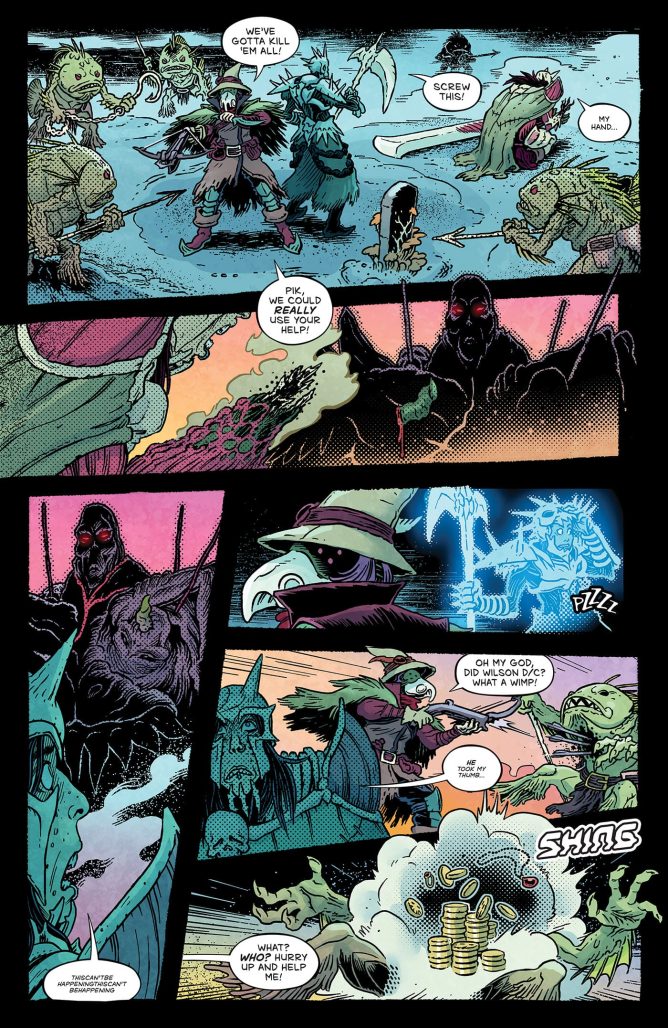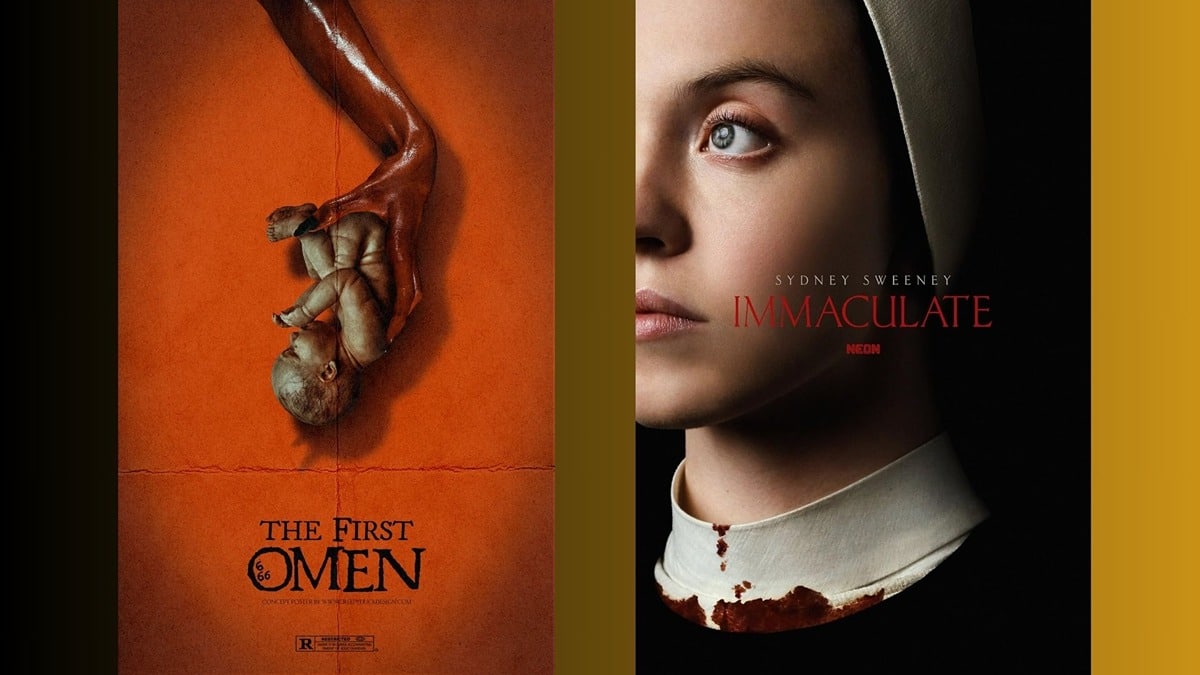There’s a special kind of horror that comes with stories that look at what certain things will become in the future should they evolve in a strange direction. David Cronenberg is a master of this kind of terror, and one movie in particular comes to mind when thinking about this: eXistenZ (1999). It concerns a virtual reality game that requires using a cutting-edge gaming controller that burrows into your body to allow access to the game. The idea deconstructs the culture of gaming and imbues it with a sense of body horror that unsettles at a very deep level because it ultimately shows how willingly (and gladly) people would invite this weird method of gaming into their lives just to be a part of the experience. Just look at Fortnite or the new Apple Vision Pro.
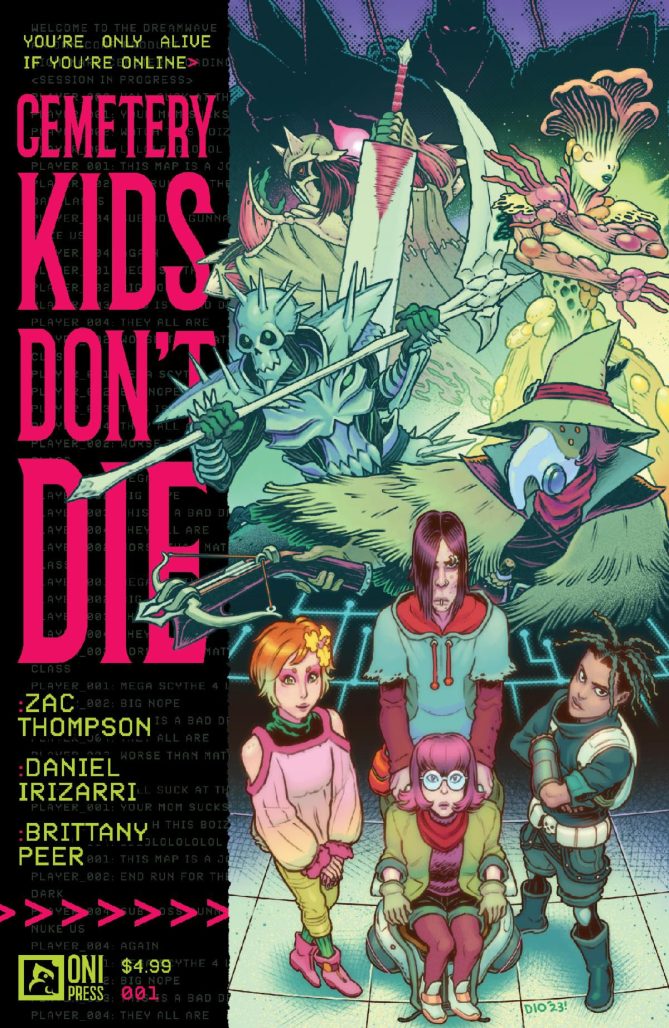
Zac Thompson and Daniel Irizarri are tapping into that same type of prophetic horror with their new comic Cemetery Kids Don’t Die, and the results are nothing short of terrifying because of how easy it is to imagine scores of players allowing a video game console to invade their bodies for the sake of gaming.
Cemetery Kids Don’t Die considers a new global gaming obsession, the Dreamwave. It’s a gaming console you play while sleeping, keeping users online in their dreams. A group of kids meet online to play in a dark fantasy world called Nightmare Cemetary, in which Elden Ring levels of scary creatures roam the open world and surviving is a colossal feat. It’s also highly addictive. It comes off as a mix of Diablo and many of the rogue-likes currently on the market, but with the MMO sensibilities of World of Warcraft.
One night, the group of friends meet for another venture into Nightmare Cemetery, but once the session is over one of them doesn’t wake up. What was an escapist fantasy threatens to become a permanent one. And then the mysteries of the console’s physical properties start to show its all-consuming qualities (something eXistenZ also explores).
Thompson and Irizarri showcase an intricately designed world that never loses sight of its characters. The Dreamwave becomes a source of unique interest because the core group of kids using it is so compelling. Each one deals with personal traumas that explain their dedication to the game. As the console takes over both mind and body, Thomspon and Irizarri ramp up the body horror to create a sense of urgency that’s not unlike that which is signature of survival horror game. It’s intense and emotional, making for a very rewarding read.
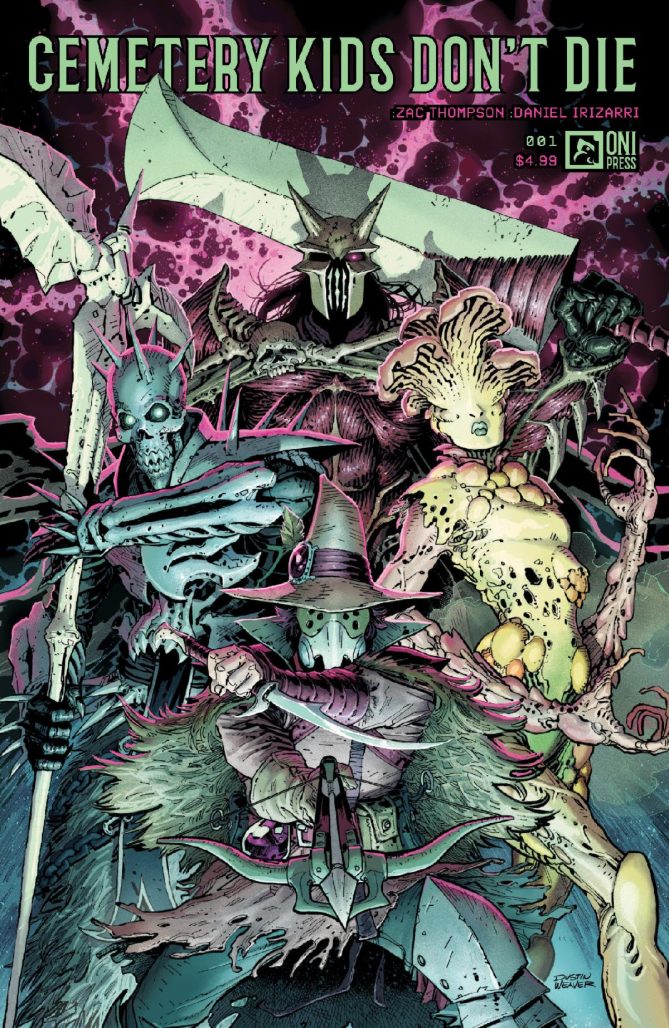
The Beat corresponded with Thompson, comics’ very own Cronenberg, to chat Cemetery Kids Don’t Die and the video games that inspired the world of Nightmare Cemetery.
RICARDO SERRANO: There’s an interesting play on trauma as a shared universe of sorts in your game world that players create themselves by bringing their anxieties into the experience. How did you land on this idea for the series?
ZAC THOMPSON: Wherever we go, we bring part of ourselves with us. I wanted to ensure that everyone’s character in the world of Nightmare Cemetery reflected something about their personal journey over the series. Birdie and Pik, the two siblings at the center of the story, are using the game to run away from trauma that happened to them in the real world. It’s very much an escapist fantasy for them. A place where they can be anything other than their trauma. But some part of our subconscious always bleeds through.
SERRANO: There’s a body horror element to the way the game is played in the story, a common theme in your work. How does this type of horror fit into the narrative and what does it help you explore within it?
THOMPSON: The Dreawave that’s used to play the game is a bio-organic video game console that quite literally uses your body as an operating system. The design, in and of itself, is a representation of how invasive something like this would actually be. It’s using your mind while you’re asleep. It’s got this strange skin all over it. It threads into your ears. So there’s an element of transgression to how the console is used.
Beyond that though – it’s very much reflective of the idea that the technology we use ends up using us in some way. As the series progresses you’re going to see what Dreamwave players are really trading away in order to access the game. It’s not a passive process. I’ll just say that.
SERRANO: What games influenced your approach to the story? Any in particular that have helped you process things during difficult times in your life?
THOMPSON: I think there’s a big element of Silent Hill in the design of the Nightmare Cemetery levels. I wanted to create a space that feels like it’s all interconnected and the environments tell you a story about the history of the game world. Nightmare Cemetery is all set in and around the fictional mountain town called Monarch Valley. The first issue follows the dried-out riverbed that leads toward the city. Then issue two dives into the surrounding remains of industrial factories and such. Before issues three and four take you into Monarch Valley proper. So there’s a sense of progression and a sense of place.
More broadly though – the game and the surrounding camaraderie through playing it is influenced by the years I spent playing World of Warcraft. And of course, Elden Ring. Which I was totally obsessed with when I was originally outlining the book. Then in terms of films – the Nightmare on Elm Street series is a huge point of inspiration.
SERRANO: How did you settle on the visual styles that separate the game world and the real world? Anything in particular you wanted to have crossover between them?
THOMPSON: There was a lot of back and forth about how to ensure both worlds felt distinct while still being part of the same shared reality of the comic. Daniel was incredible at taking my rough ideas and really running with them to create a distinct visual language for both the Nightmare Cemetery (the game) scenes and the scenes set in the real world. Daniel came up with the idea of having black gutters and more jagged paneling for the in-game sections balanced by the white gutters and clean lines in reality. It gives each section its own distinct personality on the page, where you intuitively know what world you’re looking at with a passing glance.
There wasn’t really anything we wanted to crossover between them. The goal is for them to feel as different as possible. Even down the color palettes we’ve used in both sections. Everything in the game is desaturated and uses mostly secondary colors. While everything in the real world is very bright and primary. All by design!


